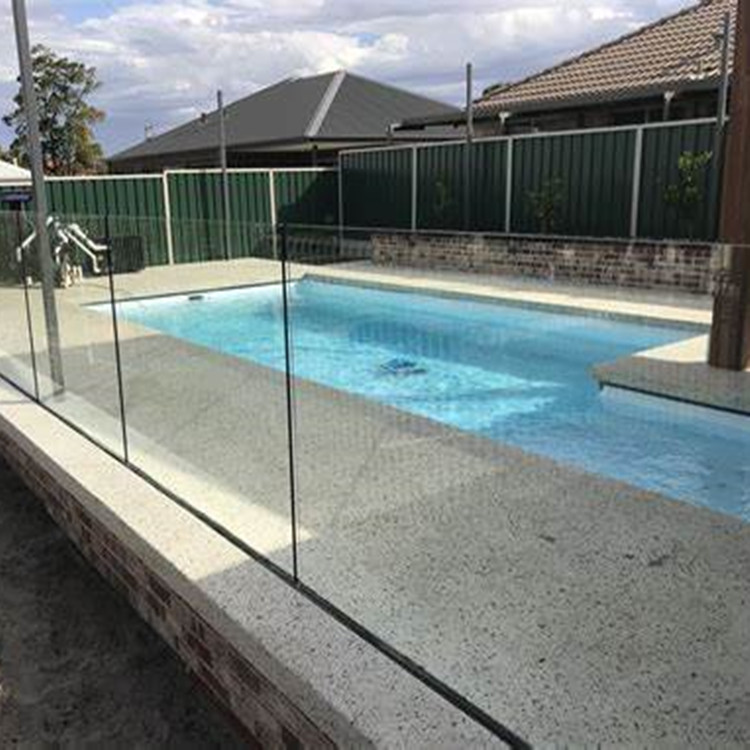
- Alkaline batteries : Alkaline batteries
- Capacitor batteries: capacitor battery
- Carbon zinc batteries: carbon zinc batteries
- Lead acid batteries: lead acid batteries
- Lead calcium batteries: lead calcium battery
- Lithium batteries : Lithium battery
- Lithium ion batteries : Lithium ion battery
- Lithium polymer batteries: Lithium polymer batteries
- Nickel cadmium batteries : nickel-cadmium battery
- Nickel iron batteries : Nickel iron battery
- Nickel metal hydride batteries : metal oxide nickel hydride battery / nickel hydrogen battery
- Nickel zinc batteries: nickel-zinc battery
- Primary batteries : primary battery
- Rechargeable batteries : Rechargeable batteries
- Sealed lead acid batteries: sealed lead acid batteries
- Silver cadmium batteries : Silver calcium battery
- Silver oxide batteries : Silver oxide batteries
- Silver zinc batteries: silver zinc batteries
- Zinc chloride batteries: silver chloride batteries
- Zinc air batteries: zinc empty battery
- Environmental Protection batteries: environmentally friendly batteries
- Primary battery: refers to a battery that cannot be charged and can only be discharged, but the primary battery capacity is generally larger than the equivalent rechargeable battery, such as zinc-manganese, alkaline dry battery, lithium battery, lithium-ion battery.
- Secondary battery: refers to a battery that can be repeatedly charged and recirculated, such as lead acid, nickel cadmium, nickel hydrogen, lithium ion, lithium polymer, fuel, zinc, aluminum, magnesium air battery, and the like.
- Rated capacity: refers to the electrical energy that can be released when the battery is fully charged and discharged to the cut-off voltage under no-load conditions. It is usually expressed by mAh or Ah (1Ah = 1000mAh). However, if the battery is connected to the load and used for a long time, the battery discharge will decrease. Since the capacity is charged and discharged at a certain C-rate, the capacity of the battery is directly related to the C-rate. Normally, the nominal capacity of the battery refers to the capacitance obtained under the condition of 0.2C. The larger the C-magnification rate, the smaller the discharge rate of the battery. Charging capacity (Ah or mAh) = charging current × charging time, discharge capacity (Ah or mAh) = discharge current × discharge time. In general, 0.2C current discharge can basically reach 95%~100% discharge rate, while 1C current discharge can only reach 90% discharge rate. Since charging is affected by the characteristics of battery raw materials, it needs to charge more time. It is 120~160% of the same current discharge time. For example, NI-MH AA1800mAh, charging at 0.2C (360mA) takes about 6~8 hours, while discharge at 0.2C (360mA) can reach about 5 hours.
- Rated voltage: refers to the potential difference caused by the chemical reaction of the positive and negative materials of the battery, and the resulting voltage value. Different batteries have different voltages due to different positive and negative materials, such as lead acid: 2V/section, nickel cadmium, nickel hydrogen: 1.2V/section, and lithium ion battery: 3.6V/section. In addition, the battery voltage will rise to a certain value as the charging process progresses, and will continue to drop to a certain value as the discharge progresses.
- Open circuit voltage: refers to the voltage of the battery when no external circuit or external load is connected. The open circuit voltage is related to the remaining energy of the battery, so the battery display of the mobile phone is manufactured using this relationship.
- Internal resistance: refers to the impedance generated by the chemical material inside the battery. Generally speaking, the smaller the internal resistance, the better the battery's charge and discharge performance. Battery internal resistance is a very complex and very important feature, also known as battery impedance, including DC resistance and AC resistance. The factors affecting the internal resistance of the battery are: 1 composition of the electrolyte; 2 composition of the components in the positive and negative electrode sheets, such as the content of conductive carbon powder; 3 geometric area and specific surface area of ​​the positive and negative electrode sheets; 4 metal substrate (copper foil and Aluminum foil); 5 electrolyte and positive and negative electrode sheet interface state; 6 temperature; 7 state of charge (battery open circuit voltage); 8 measurement frequency; 9 internal structure design of the battery.
- C: The ratio of the current magnitude at which the battery is charged and discharged, that is, the magnification. For example, a 1200 mAh battery, 0.2 C means 240 mA (0.2 times the 1200 mAh), and 1 C means 1200 mA (1 rate of 1200 mAh). The charge and discharge efficiency of charge and discharge efficiency is also related to C (magnification). Under the condition of 0.2C, the charge and discharge efficiency of the polymer lithium battery should be 99.8%. Charge and discharge efficiency = discharge capacity / charge capacity × 100%
- Discharge cut-off voltage: refers to the voltage that is discharged after the battery is fully charged, and the voltage reached when the battery is discharged (if it continues to discharge, it is over-discharged, which has great damage to the battery life and performance). Generally speaking, lead-acid battery: 1.8 V / section, nickel cadmium, nickel hydrogen: 1.0V / section, lithium ion battery: 2.75V / section.
- Open circuit voltage: refers to the voltage between the positive and negative terminals of the battery under no load.
- Depth of discharge: The ratio of the amount of discharge compared to the rated capacity of the battery.
- Overcharge (discharge): Refers to the charge (discharge) state of the battery. If the battery is continuously charged (discharged), the battery may leak or deteriorate.
- Energy density: refers to the energy released per unit volume or unit mass, generally expressed by volume energy density (wh/l) and mass energy density (wh/kg).
- Self-discharge: After the battery is fully charged, its capacity will naturally decay under conditions of no contact with the external circuit and normal temperature. During the storage process, the battery storage capacity will gradually decrease, and the ratio of the reduced capacity to the rated capacity is called the self-discharge rate (the nickel-cadmium, nickel-hydrogen battery and the lithium-ion battery have a higher self-discharge rate). Generally, the ambient temperature has a great influence on it, and too high a temperature will accelerate the self-discharge of the battery. The expression and unit of battery capacity attenuation (self-discharge rate) are: %/month. The self-discharge rate of nickel-cadmium and nickel-hydrogen batteries is 20-25%/month, and the self-discharge rate of lithium batteries is 2-5%/month.
- Cycle life: A secondary battery undergoes a charge and discharge called a cycle or a cycle. Under a certain discharge system, the number of cycles the battery is subjected to before the battery capacity drops to the specified value is called the cycle life. When the secondary battery is repeatedly charged and discharged, the battery capacity will gradually decrease. Generally, the rated capacity of the battery is taken as the standard. When the battery capacity is reduced to 60% or 80%, the number of charge and discharge times is called the cycle life.
- Memory effect: The memory effect of a battery is the percentage of a fully discharged battery that can be charged at the next charge. In order to eliminate the memory effect of the battery, it must be completely discharged and then recharged before charging in the second half. Only in this way can you be fully charged with 100% battery. The memory effect of the battery brings inconvenience to the rapid charging of the battery. The nickel-cadmium battery is charged without being discharged, and the capacity may not return to the original standard, but it can be charged by a large current after deep discharge, and the capacity may be recovered. Nickel-metal hydride and lithium batteries have no memory effect.
- CC/CV: CC is constant current, charging (discharging) the battery with a fixed current; CV is constant voltage, charging the battery with a fixed voltage, and the charging current will decrease as the voltage rises. The lead-acid battery is generally charged by a constant voltage method, and the nickel-cadmium and nickel-hydrogen batteries are generally charged by a constant current method, and the lithium ion battery is generally charged by a constant current method after a constant voltage (4.2 V/section).
- Trickle charging: refers to charging the battery with a current of less than 0.1C. Generally, when the battery is nearly fully charged, it is used for supplementary charging. In addition, if the load does not have strict requirements on the charging time, it is recommended to use trickle charging to charge (here) In case of battery life is longer).
- -△V: This is the characteristic of the charging process of nickel-cadmium and nickel-hydrogen batteries (that is, when the battery is nearly fully charged, after the voltage reaches a peak value, it continues to charge, and the voltage will drop slightly in an instant, generally at 3~5mV. Between the charging chip, the battery is controlled according to the -ΔV value.
- â–³V/â–³t: This is another characteristic of the charging process of nickel-cadmium and nickel-hydrogen batteries (that is, when the battery is nearly fully charged, the surface temperature of the battery will rise rapidly with time, and the temperature rises every minute as the charging The cut-off condition is generally set to rise by 1 degree per minute as a cut-off point.
- State of charge (Depth of discharge) The state of charge and the depth of discharge are both representations of the number of batteries retained. The charge and discharge state is expressed as a percentage ratio, which is 100% at full charge and full discharge. The state of charge is called SOC; the depth of discharge is called DOD. Such as: DOD=250mAh/800mAh × 100%=31.25%
Sleek glass is hard to climb, making a glass pool fence one of our best options when it comes to safety and security as it will effectively prevent children and pets from entering the pool area. And when kids are using the pool, the completely transparent walls make it easy to keep an eye on them, even from outside the pool area. Pool fences save lives. Experts recommend installing a pool safety fence as the best way to protect young children from drowning. Glass pool fences are a modern safety solution to prevent tragic accidents without blocking your view. Our Tempered Glass will be made to meet pool fence design, thickness, size, even with holes.
At present, 12mm TOUGHENED GLASS be chosen more for pool fence panels, hight about 1200mm, width different based on customer's request. And now, some customers also choose Laminated Glass , even SGP laminated glass for pool fence in some special areas, all can be made to request.
So Clear Tempered Glass , Colored Tinted Tempered Glass, Ultra Clear Tempered Glass, Clear Laminated Glass , Colored Laminated Glass , Low Iron Laminated Glass and so on, can also be choice based on request.
Reference photos:



Swimming Pool Fence Glass,Toughened Glass For Pool Fence,12mm Tempered Pool Fence Glass
Shanghai Lead Glass Co.,Ltd , https://www.leadglaze.com